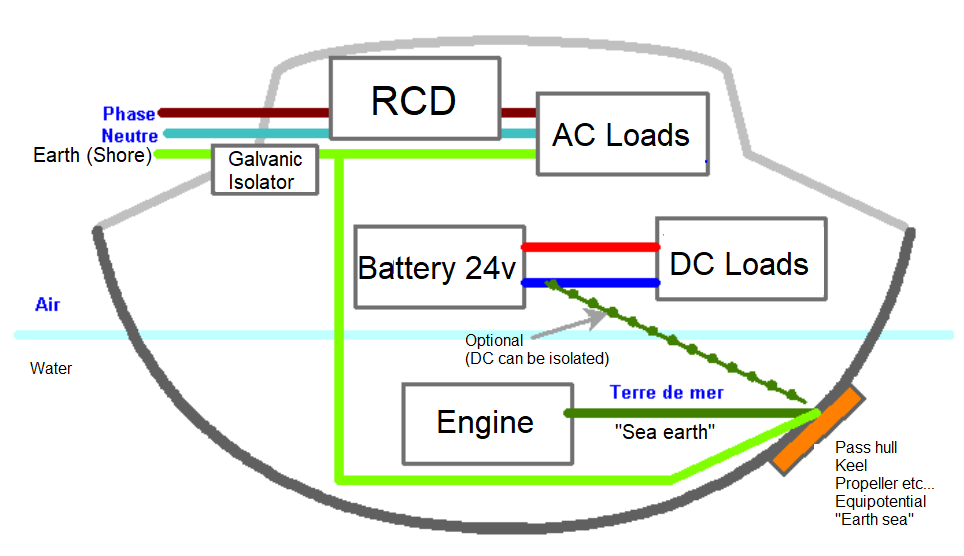Hello there !
Forgive my "french" english but I'm hoping to find an answer here.
I am working on a 1908 Steel boat, doing everything. I plan on using a Multiplus II 24v, a Smart Solar 150/60, Orion Tr Smart to charge the service battery via the alternator, galvanic isolator, with all the fuses and protection needed, and a Cerbo GX.
My questions are : Do I need to use the hull of the boat as a mass for all of my DC current? To share an equipotential point or is it better to isolate the service (lights pumps etc) and having the motor side connected to the hull (connected to the - of the starter motor so the hull).
I know that in the US it is mandatory to connect the hull with the negatives of the batteries but it isn't in France and I wonder why...
About the AC current, with the shore power, my earth/ground is provided by the shore, I get it. But when sailing, where is driven the current if a fault occurs? I know that the multiplus has a Ground wire, is that it? And so, this Ground wire has to be connected to the hull or to my negative Busbar? I read about the ground relay that switch to the neutral, might be a stupid question but should I connect a neutral wire to the hull/negative busbar?
I tried to find a solution on the internet but I read something and then the reverse 3 min later... I plan to live on this boat with my wife and my son and I want it to be as safe as possible.
Thanks for your time, I am really worried about this.
Baptiste

